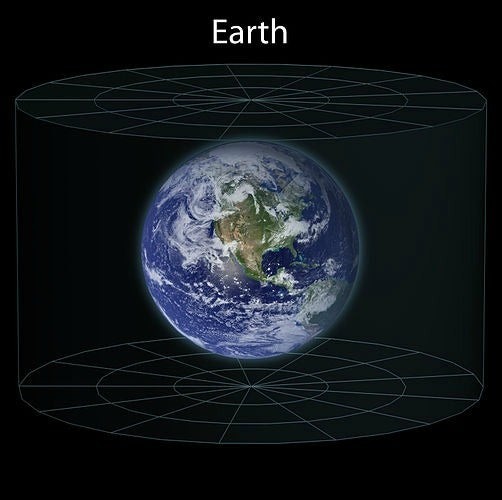The Earth, our home, feels vast and immense to us. But how does our planet measure up against the grand scale of the universe? Prepare to be humbled as we journey from our familiar world to the farthest reaches of the observable cosmos.
From Earth to the Moon: A Small Step
Earth, the fifth largest planet in our solar system, boasts a radius of 6,378 kilometers at the equator. Light, the fastest thing in the universe, can circumnavigate our planet seven and a half times in a single second.
Our moon, orbiting at an average distance of 385,000 kilometers, marks the boundary of Earth’s gravitational dominance. This distance is roughly 60 times Earth’s radius. Light takes about 1.3 seconds to travel from Earth to the moon. While seemingly large to us, this is just a tiny hop on a cosmic scale.
Our Sun and Solar System: A Growing Perspective
Our solar system, dominated by the Sun’s immense gravity, dwarfs Earth. The total mass of the solar system is approximately 333,000 times that of Earth. This means our planet contributes a mere 0.0003% to the solar system’s total mass.
Earth orbits the Sun at an average distance of 93 million miles, a distance defined as one Astronomical Unit (AU). Light from the Sun takes about 8 minutes to reach us. Neptune, the farthest known planet, orbits at a staggering 30 AU. Even Voyager 1, humanity’s farthest spacecraft, is only about 150 AU away, a tiny fraction of the solar system’s estimated two light-year radius.
Beyond Our Solar System: The Vastness Unfolds
Our closest stellar neighbor, Proxima Centauri, lies 4 light-years away. Our local interstellar cloud, a collection of about 53 star systems, spans 30 light-years. These distances, measured in the time it takes light to travel, begin to reveal the true vastness of space.
The Milky Way Galaxy: A Sea of Stars
The Milky Way Galaxy: Home to hundreds of billions of stars, including our Sun.
Our solar system resides within the Milky Way galaxy, a swirling disc of hundreds of billions of stars. We orbit the galactic center at an average distance of 28,000 light-years, completing one orbit every 250 million years. The Milky Way itself stretches 100,000 light-years across, containing a central bulge about 12,000 light-years in diameter. Scientists estimate that billions of Earth-sized planets could exist within the Milky Way’s habitable zones. Adding to the galaxy’s immensity, a halo of dark matter, invisible to us, accounts for over 90% of its mass.
Galactic Clusters and Superclusters: Islands in the Cosmic Ocean
The Milky Way belongs to the Local Group, a cluster of at least 47 galaxies spanning 10 million light-years. The Andromeda galaxy, our largest galactic neighbor, will eventually collide with the Milky Way billions of years from now. The Local Group, in turn, is part of the Virgo Supercluster, a vast collection of 100 galaxy clusters and roughly 2,000 individual galaxies, spanning 110 million light-years.
The Observable Universe: The Limit of Our Sight
The observable universe: The vast expanse we can currently see.
The Virgo Supercluster is but a small component of the Laniakea Supercluster, which itself is just one of countless superclusters in the observable universe. This vast expanse, stretching 93 billion light-years in diameter, contains an estimated 10 billion superclusters, 350 billion large galaxies, and a staggering 30 billion trillion stars.
Conclusion: A Humbling Perspective
From a cosmic perspective, Earth is incredibly small. Comparing our planet’s size to the universe is like comparing a grain of sand to the entire Sahara Desert. This humbling realization underscores the vastness of the cosmos and our relatively insignificant place within it. Yet, it also highlights the remarkable fact that we, on this tiny planet, have begun to unravel the mysteries of the universe itself.

